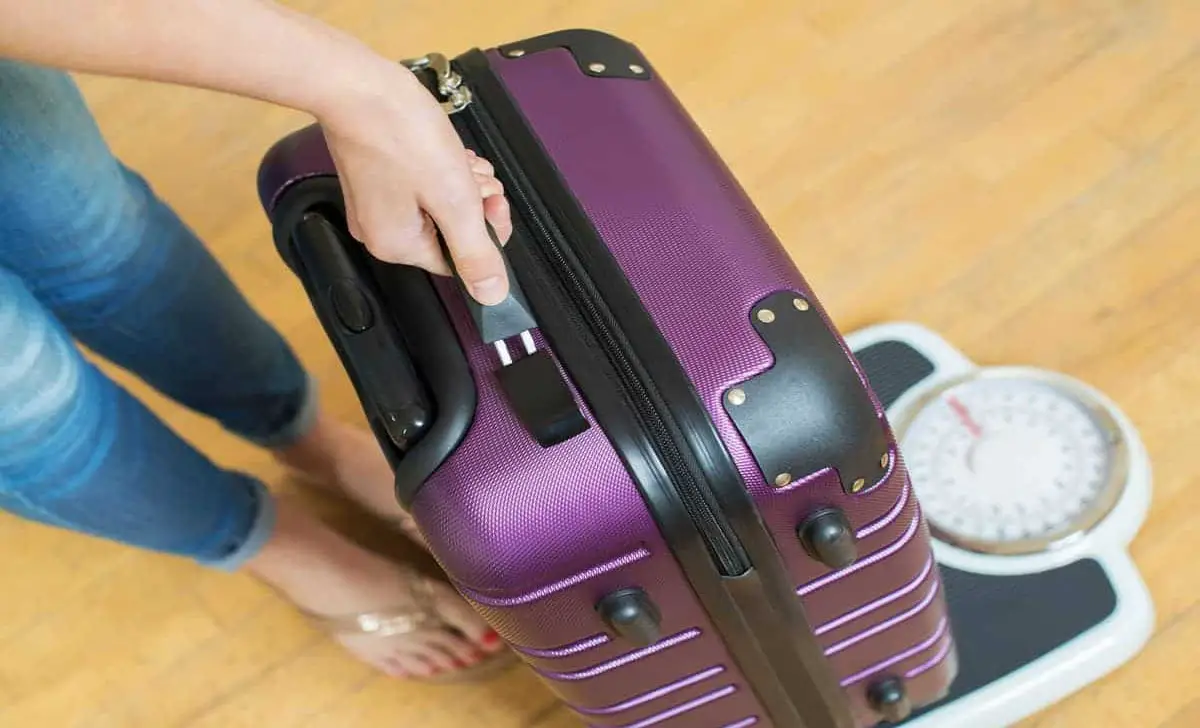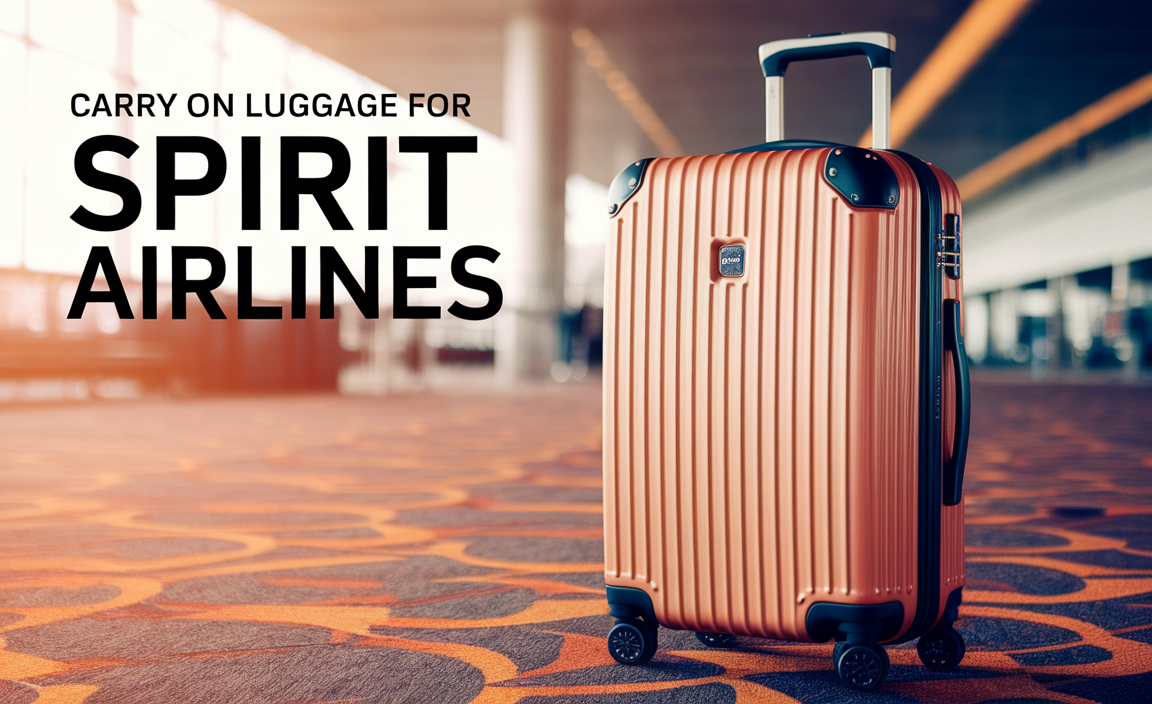Determining the average weight of a packed suitcase can be tricky, especially if you always end up overpacking. Whether you’re preparing for a weekend getaway or a long-haul trip. Knowing the typical weight range of a packed suitcase can save you from excess baggage fees and unnecessary stress.
Here, we’ll break down the factors that influence the weight of your luggage, from the type of trip to the duration of your stay. We’ll also provide practical tips on estimating and managing your packed suitcase’s weight effectively. So, before you zip up that luggage, let’s dive into the world of suitcase weights and make your travels lighter and more convenient.

Importance Of Knowing The Weight Of A Packed Suitcase
Knowing the weight of a packed suitcase is crucial for several reasons. Airlines often have strict regulations regarding luggage weight limits. Exceeding these limits can result in additional fees or having to repack at the airport.
Additionally, knowing the weight of your suitcase can help you pack efficiently and avoid overpacking. Making traveling more convenient and comfortable. By being aware of the weight of your luggage. You can streamline your packing process and ensure a smoother travel experience overall.
5 Tips On How To Determine The Average Weight Of Packed Suitcase
Determining the average weight of a packed suitcase is crucial for travelers to avoid any additional fees or exceeding weight limits set by airlines. On average, a fully packed medium-sized suitcase can weigh anywhere between 40 to 50 pounds, depending on the items packed.
It’s essential to consider the airline’s weight restrictions and your personal needs when packing to ensure a hassle-free travel experience. Remember to pack efficiently, prioritize essentials, and weigh your suitcase before heading to the airport to prevent any last-minute surprises. Here are some tips below:
Tip 1: Using A Luggage Scale
When determining the average weight of a packed suitcase, using a luggage scale can be incredibly helpful. A luggage scale is a simple tool that lets you weigh your suitcase before heading to the airport, ensuring it meets the airline’s weight restrictions. To use a luggage scale, simply attach it to the handle of your suitcase and lift it off the ground.
The scale will give you an accurate weight reading, helping you avoid any surprises at check-in. This tip can save you time and money by preventing overweight baggage fees and keeping your travel experience stress-free.
Tip 2: Packing Strategically
Packing strategically is key to determining the average weight of your packed suitcase. By organizing your belongings efficiently and maximizing space, you can minimize the weight of your suitcase. Here are a few tips for packing strategically:
- Roll Your Clothes: Rolling your clothes instead of folding them can help save space and reduce wrinkles.
- Wear Heavier Items: If you have bulky or heavy items, consider wearing them on the plane instead of packing them in your suitcase.
- Utilize Your Backpack Or Personal Item: Distribute the weight by carrying some items in your backpack or personal item instead of your suitcase.
Tip 3: Utilizing Packing Cubes

When determining the average weight of a packed suitcase, utilizing packing cubes can be a game-changer. Packing cubes are not only great for keeping your items organized and compact. But they can also help you manage the weight distribution in your luggage. By using packing cubes, you can easily separate your belongings into different categories. Making it easier to assess the weight of each section.
This method lets you strategically pack heavier items in one cube and lighter items in another, helping you achieve a more balanced and efficient packing strategy. Next time you’re preparing for a trip. Consider incorporating packing cubes into your packing routine to help streamline the process and keep your suitcase within the desired weight limit.
Tip 4: Weighing Before And After Packing
Weighing your suitcase before and after packing is an effective way to determine the average weight of your packed suitcase. This method allows you to calculate the weight of the items you add to your suitcase and ensure that you are within the weight limits set by airlines. Here’s how to weigh your suitcase before and after packing:
- Weigh Your Empty Suitcase: Start by weighing your empty suitcase using a luggage scale. This will give you a baseline weight to work with.
- Pack Your Suitcase: Carefully pack your belongings into your suitcase, evenly distributing the weight. Be mindful of any weight limits or restrictions set by the airline.
- Weigh Your Suitcase: Once you have packed everything, weigh your suitcase again using the luggage scale. This will give you the total weight of your packed suitcase.
By subtracting the weight of your empty suitcase from your packed suitcase, you can determine the weight of the items you have added. This will help you calculate the average weight of your packed suitcase and ensure that you are within the weight limits set by the airline.
Tip 5: Distributing Weight Effectively
Distributing weight effectively is crucial for determining the average weight of your packed suitcase. You can avoid overpacking and exceeding weight limits by distributing weight evenly between your suitcase, backpack, and personal items. Here are some tips for distributing weight effectively:
- Place Heavier Items At The Bottom: Place heavier items at the bottom when packing your suitcase to create a stable base.
- Distribute Weight Between Bags: If you are travelling with a backpack or personal item in addition to your suitcase, distribute some of the weight to these bags to lighten the load in your suitcase.
- Use The Space Wisely: Pack items tightly and use all available space in your bags to ensure even weight distribution.
By distributing weight effectively, you can minimize the strain on your suitcase and ensure that you are within the weight limits set by airlines. This will help you determine the average weight of your packed suitcase and avoid any extra fees or inconveniences at the airport.
What Do You Do When Your Suitcase Is Overweight At The Airport?
When confronted with an overweight suitcase at the airport, travelers face a critical decision that can significantly impact their travel experience. In such a situation, remaining calm and considering all available options is essential. One potential solution is to redistribute items from the overweight suitcase to any accompanying bags to ensure that each piece of luggage meets the weight requirements.
Alternatively, travelers may pay the excess baggage fee to transport the overweight suitcase. Prioritizing essential items and valuables can help minimize the weight discrepancy and facilitate a smoother check-in process. To avoid such predicaments, it is advisable to familiarize oneself with the airline’s baggage policies and weight limits.
How Can We Weigh Luggage At Home Before Going To The Airport?

When preparing for a trip, ensuring that your luggage meets the weight restrictions set by airlines is crucial to avoid additional fees and delays at the airport. One way to streamline this process is by weighing your luggage at home before heading to the airport. Here are some methods to help you accurately weigh your luggage:
- Use A Handheld Luggage Scale: Investing in a portable luggage scale allows you to easily weigh your bags at home. Simply attach the scale to the luggage handle and lift the bag off the ground to obtain a precise weight measurement.
- Utilize A Bathroom Scale: If you don’t have a luggage scale, you can use a bathroom scale by first weighing yourself without the luggage and then weighing yourself while holding the luggage. The difference between the two weights will indicate the weight of your luggage.
- Consider Packaging Weight: Remember to account for the weight of any packaging or bags that will not be included in your checked luggage. Subtract this weight from the total to determine the actual weight of your belongings.
Do Any Airports Have Scales To Weigh Luggage?
Many airports worldwide have scales for passengers to weigh their luggage before check-in. This service is commonly found in the check-in areas or near the baggage drop-off points. The availability of scales at airports is essential in ensuring that passengers comply with airline weight restrictions, thereby avoiding additional fees for overweight luggage.
By weighing their bags before reaching the check-in counter, travelers can make necessary adjustments to redistribute items or remove excess items to meet the weight limit. This proactive approach can help streamline the check-in process and prevent delays for both the passengers and the airline staff. Additionally, having access to airport scales promotes transparency and helps passengers plan ahead to avoid any last-minute surprises.
Conclusion
Packing your suitcase efficiently is key to a stress-free travel experience. Knowing the average weight of a packed suitcase can help you avoid excess baggage fees and make sure you have everything you need for your trip. Overpacking can lead to unnecessary stress, extra fees, and inconvenience during your travels.
By being mindful of what you pack and choosing versatile items, you can ensure that your suitcase remains at a reasonable weight while still having everything you need for your trip.
Whether you’re a light packer or tend to bring your whole wardrobe, being aware of the typical weight range can guide your packing decisions. So, next time you’re preparing for a journey, keep the average weight of a packed suitcase in mind to streamline your packing process and make traveling a breeze.
Frequently Asked Questions
1.What Is The Best Lightweight Luggage For International Travel?
Regarding lightweight luggage for international travel, options like the Curiosity Small Luggage from Kipling are ideal. These bags are not only lightweight but also durable and designed to meet the size restrictions of most airlines.
2.What Is The Best Brand Of Lightweight Luggage?
Kipling is one of the best brands of lightweight luggage. With a focus on lightweight design, quality materials, and durable construction, Kipling offers a range of luggage options that are perfect for travelers who want to pack light without sacrificing durability.
3.How Much Weight Can A Medium Suitcase Hold?
The weight capacity of a medium suitcase can vary depending on the brand and model. A medium suitcase can average hold around 40-50 pounds (18-23 kilograms).
4.Which Are The Lightest Lightweight Suitcases?
Some of the lightest lightweight suitcases on the market include options from brands like Kipling, Samsonite, and Travelpro. These suitcases are designed with lightweight materials and innovative features to minimize weight without compromising durability.
5.How Much Does The Average Suitcase Weigh?
The average weight of a suitcase can vary depending on its size and material. On average, a mid-size suitcase weighs around 7-10 pounds (3-4.5 kilograms), while larger suitcases can weigh up to 20 pounds (9 kilograms) or more.
6.What Is The Maximum Weight For A Packed Suitcase On A Domestic Flight?
The maximum weight for a packed suitcase on a domestic flight can vary depending on the airline. In the United States, most airlines have a weight limit of 50 pounds (23 kilograms) for checked bags on domestic flights.
7.How Can You Estimate The Weight Of Your Luggage Without A Scale?
If you don’t have access to a scale, you can estimate the weight of your luggage using a few methods. One option is to compare the weight of your packed suitcase to a known weight, such as a bag of sugar or a gallon of milk. You can also estimate the weight based on the size and density of your belongings.







